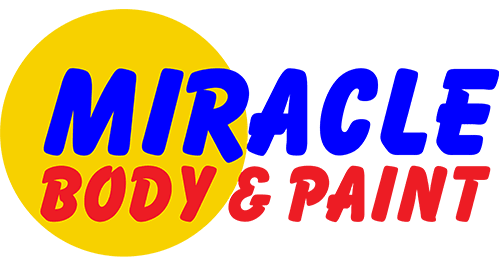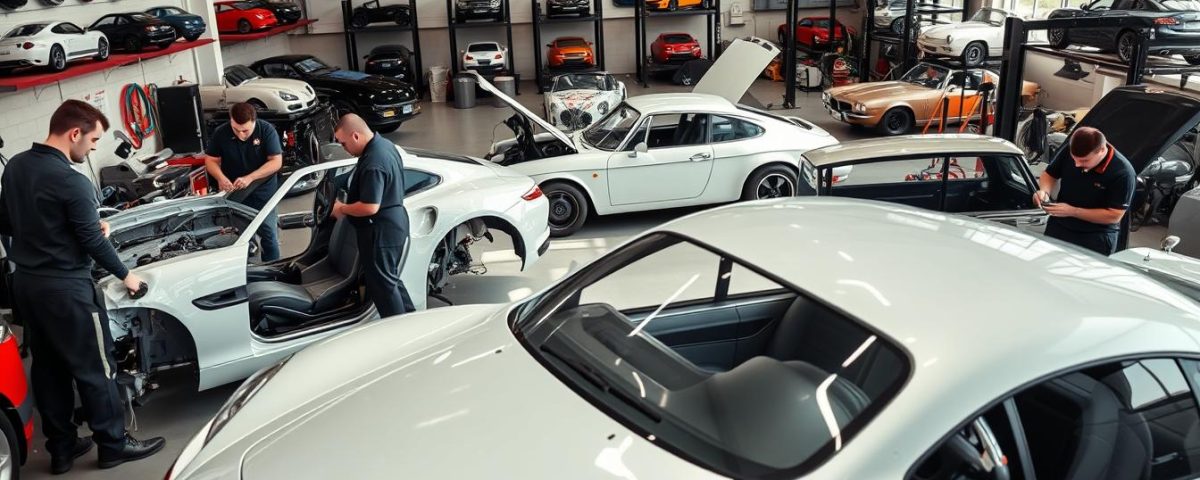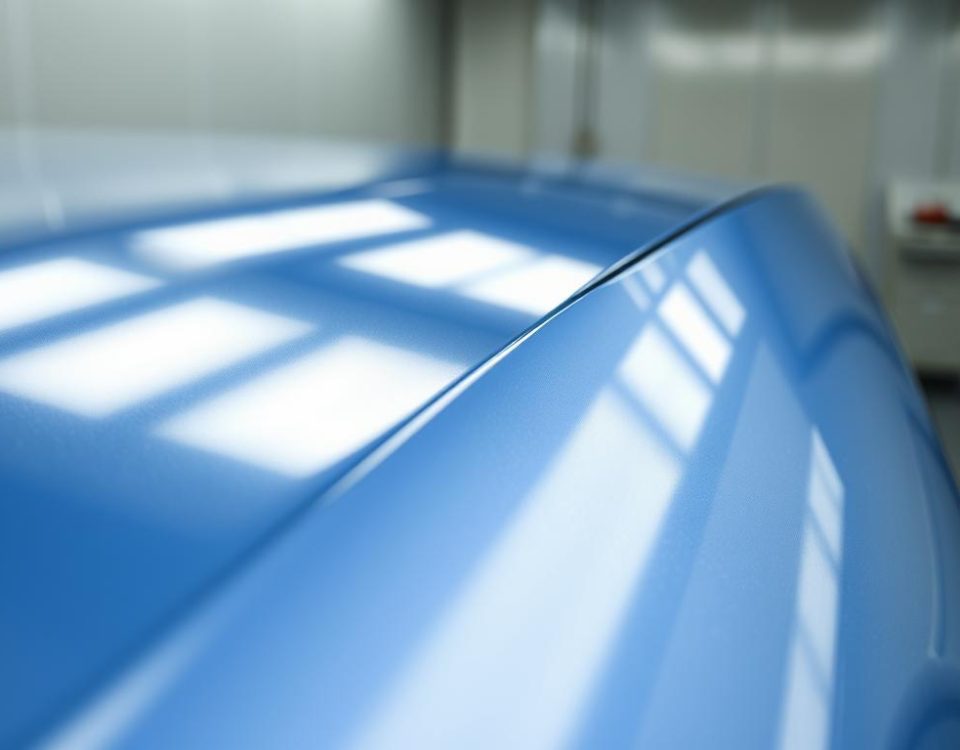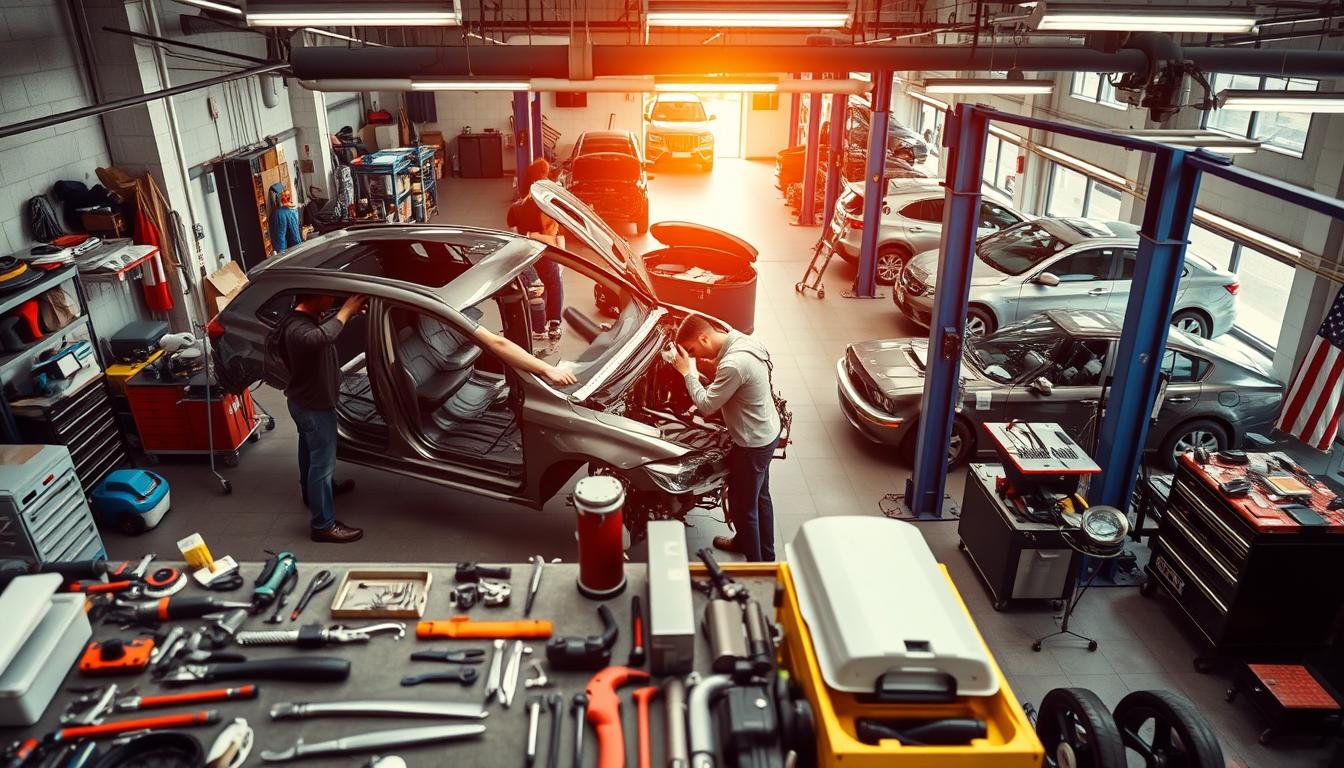
Navigating the Insurance Process for Collision Repair
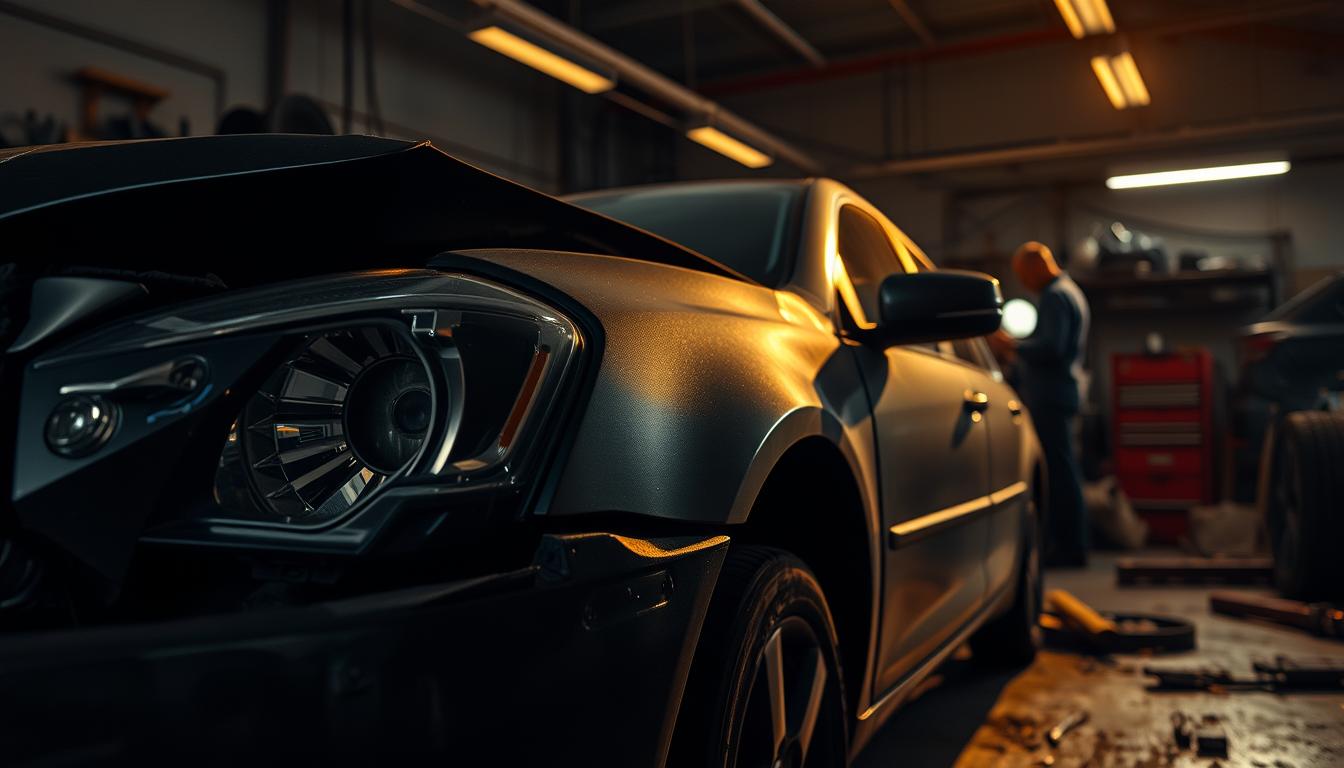
7 Signs Your Car Needs Collision Repair After an Accident
When it comes to maintaining your vehicle’s appearance, understanding the nuances of auto body repair is crucial. Not all dings and dents are created equal, and the process can vary significantly between different car models.
At Miracle Body and Paint, with locations in San Antonio, we recognize the importance of tailored repair services. Our expertise ensures that your vehicle receives the specific care it needs, regardless of its make or model.
The uniqueness of each car’s design and construction means that a one-size-fits-all approach to auto body repair is not effective. Our team is dedicated to providing personalized service, ensuring that every vehicle is restored to its original condition.
Key Takeaways
- Different car models require unique approaches to auto body repair.
- Understanding these differences is key to effective repair.
- Miracle Body and Paint offers tailored repair services for various car models.
- Expertise in auto body repair ensures high-quality results.
- Personalized service is crucial for restoring a vehicle’s original condition.
Understanding the Basics of Auto Body Repair
Understanding the basics of auto body repair is crucial for car owners who want to ensure their vehicle is properly restored after an accident. Auto body damage can range from minor scratches and paint imperfections to significant collision-related damage. The repair process involves various techniques and terminologies that are essential to comprehend.
Common Terminology Used in the Industry
The auto body repair industry uses specific terminology that can be unfamiliar to many car owners. Terms like collision repair, auto body restoration, and paint matching are commonly used. Familiarizing yourself with these terms can help you better understand the repair process and communicate effectively with your repair shop.
Some other key terms include frame straightening, which refers to the process of repairing a vehicle’s frame after a collision, and panel replacement, which involves replacing damaged body panels. Understanding these terms can help you navigate the repair process more confidently.
The Importance of Quality Repairs
Quality repairs are essential to ensure that your vehicle is restored to its original condition. A high-quality repair not only enhances the appearance of your vehicle but also ensures its safety and durability. Poorly done repairs can lead to further damage, compromising the vehicle’s structural integrity and potentially putting you and your passengers at risk.
To ensure quality repairs, it’s crucial to choose a reputable repair shop with experienced technicians. They will use the latest techniques and equipment to restore your vehicle, providing a warranty for their work.
What to Expect During the Repair Process
During the repair process, you can expect the repair shop to start by assessing the damage to your vehicle. This involves creating a detailed estimate of the repairs needed, including the cost of parts and labor. Once you approve the estimate, the repair shop will begin the repair work, which may include collision repair, painting, and other necessary services.
It’s essential to maintain open communication with your repair shop throughout the process. Ask questions, request updates, and clarify any concerns you may have. This will help ensure that you’re satisfied with the final result.
Factors That Affect Repair Costs
Understanding the factors that affect auto body repair costs is crucial for car owners who want to be prepared for the unexpected. Several elements contribute to the final cost, making it essential to consider each factor carefully.
The extent of the damage, type of repair required, make and model of the vehicle, labor and materials, and geographic location all play a significant role in determining the total cost.
Types of Damage and Their Impact
The type and severity of damage significantly impact the cost of auto body repair. Minor damages, such as small dents or scratches, are typically less expensive to repair than major damages that require extensive work, like replacing a car’s bumper or repairing a crumpled hood.
The location of the damage is also a critical factor. Damages that affect critical systems, such as the engine or suspension, can be more costly to repair than those that are purely cosmetic.
Labor and Parts Costs by Model
Collision repair labor costs can vary significantly depending on the make and model of the vehicle. Luxury cars, for example, often require specialized labor and parts, increasing the overall cost.
The cost of parts also differs by model. Some cars have more expensive parts than others, and the availability of these parts can impact the overall cost and duration of the repair.
Insurance Considerations for Different Vehicles
Insurance coverage and policies can also affect the cost of auto body repair. Different insurance providers have varying policies regarding the repair of different car models, and some may have specific requirements for certain vehicles.
Car owners should review their insurance policies to understand what is covered and what is not, ensuring they are prepared for any potential out-of-pocket expenses.
Popular Car Models and Their Unique Repair Needs
Auto body repair is not a one-size-fits-all process; various car models require distinct approaches. The diversity in car designs, materials, and technologies means that repair techniques must be adapted to each model’s unique needs.
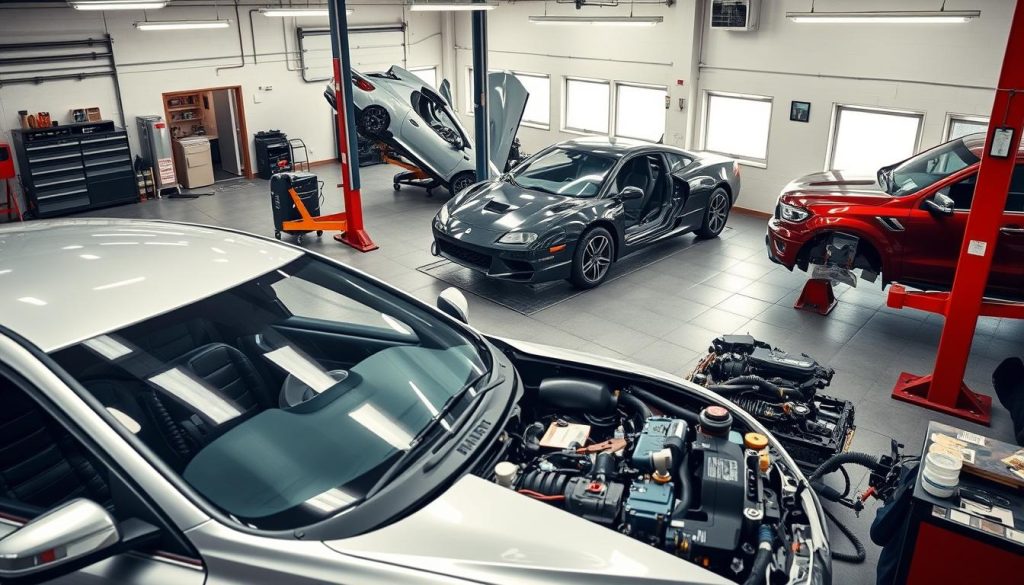
Sedans vs. SUVs: What’s the Difference?
Sedans and SUVs have different body structures, which affect their repair needs. Sedans typically have a more straightforward frame design, making repairs relatively simpler. SUVs, on the other hand, often have a more complex frame and higher ground clearance, requiring specialized equipment and techniques for repair.
The difference in repair approaches between sedans and SUVs also extends to the types of materials used. SUVs may incorporate more robust materials to support their size and weight, while sedans might use lighter materials to enhance fuel efficiency.
Luxury Cars: Specialized Techniques Required
Luxury cars often feature advanced materials and complex designs, necessitating specialized repair techniques. The use of high-strength steel, aluminum, and other exotic materials requires technicians to have specific training and equipment.
Moreover, luxury cars frequently come equipped with sophisticated technologies, such as advanced driver-assistance systems (ADAS), which demand precise calibration during the repair process.
Electric Vehicles: Unique Challenges in Repairs
Electric vehicles (EVs) present unique challenges in auto body repair due to their distinct powertrains and battery systems. Technicians must be aware of the safety protocols for handling high-voltage systems and the specific repair procedures for battery packs.
Additionally, EVs often have different body structures designed to accommodate battery placement, which can affect repair strategies. Understanding these differences is crucial for effective and safe repairs.
The Role of Technology in Modern Repairs
The role of technology in modern auto body repair is multifaceted, influencing various aspects of collision repair. With the integration of advanced technologies, the industry has seen significant improvements in efficiency, accuracy, and overall quality of repairs.
Advancements in Auto Body Repair Technology
Recent years have witnessed substantial advancements in auto body repair technology. These include the development of sophisticated diagnostic tools, improved welding techniques, and the use of advanced materials. Such innovations have not only streamlined the repair process but also enhanced the precision and durability of repairs.
Diagnostic Tools and Their Benefits
Diagnostic tools play a crucial role in modern collision repair. These tools enable technicians to accurately assess damage, identify potential issues, and develop effective repair strategies. The benefits of diagnostic tools include improved accuracy, reduced repair times, and enhanced customer satisfaction.
How Technology Influences Repair Times
Technology has significantly influenced auto body repair times. With the aid of advanced diagnostic tools and streamlined repair processes, technicians can now complete repairs more efficiently. This not only reduces the time vehicles spend in the repair shop but also gets them back on the road sooner, minimizing inconvenience to vehicle owners.
Furthermore, technology has enabled repair shops to adopt more efficient workflows, reducing labor costs and improving overall productivity. The use of digital tools for estimating and planning repairs has also contributed to faster turnaround times, making the repair process more convenient for customers.
Safety Features and Their Repair Implications
The increasing number of safety features in modern vehicles has significant implications for collision repair. As vehicles become more sophisticated, the need for skilled technicians who understand these advanced systems is growing.
Understanding Advanced Driver-Assistance Systems (ADAS)
Advanced Driver-Assistance Systems (ADAS) are technologies used in vehicles to improve safety. These systems include features like lane departure warning, adaptive cruise control, and automatic emergency braking. Understanding how ADAS work is crucial for proper auto body repair.
ADAS rely on a complex network of sensors and cameras to function correctly. When a vehicle with ADAS is involved in a collision, it’s not just the visible damage that needs to be assessed; the integrity of these systems must also be evaluated.
Proper Calibration After Repair
After a collision repair, it’s essential to properly calibrate the ADAS systems. Calibration ensures that the sensors and cameras are correctly aligned and functioning as intended. Without proper calibration, these safety features may not work correctly, potentially putting the vehicle’s occupants at risk.
The calibration process involves using specialized equipment to adjust the ADAS components. This process requires technicians to have the necessary training and equipment to perform the calibration accurately.
The Impact of Safety Features on Repair Complexity
The presence of advanced safety features like ADAS significantly impacts the complexity of auto body repairs. Repairing a vehicle with these systems requires more than just fixing the visible damage; it demands a comprehensive understanding of how these systems work and how to restore them to their original state.
Key considerations include:
- Assessing damage to ADAS components
- Properly repairing or replacing damaged ADAS parts
- Calibrating ADAS systems after repair
- Ensuring all safety features are functioning correctly before returning the vehicle to the owner
By understanding the implications of safety features on the repair process, technicians can provide higher quality collision repair services, ensuring that vehicles are not only cosmetically restored but also safe to operate.
Material Differences Across Car Models
The materials used in car manufacturing vary significantly across different models, affecting auto body repair techniques. Modern vehicles are made with a range of materials, each with its unique properties and repair requirements.
Understanding these differences is crucial for effective and efficient auto body repair. The type of material used can influence the repair method, cost, and overall quality of the repair.
Steel vs. Aluminum Body Panels
One of the primary material differences across car models is the use of steel versus aluminum body panels. Steel is traditionally used in many vehicles due to its strength and cost-effectiveness. However, aluminum is becoming increasingly popular, especially in luxury and high-performance vehicles, due to its lightweight and corrosion-resistant properties.
Repairing aluminum body panels requires specialized techniques and equipment, as aluminum is more prone to damage and has different welding requirements compared to steel. Technicians must be trained in handling aluminum to ensure proper repairs.
Composite Materials in Modern Vehicles
In addition to steel and aluminum, many modern vehicles incorporate composite materials, such as carbon fiber and fiberglass. These materials offer exceptional strength-to-weight ratios and are often used in high-performance and luxury vehicles.
Repairing composite materials can be complex and requires specific techniques and materials. Technicians must be knowledgeable about the properties of these materials and how to repair them effectively to maintain the vehicle’s integrity and appearance.
Paint Technology: Matching and Application Techniques
Advances in paint technology have also impacted auto body repair. Modern vehicles often feature complex paint finishes, including metallic and pearlescent coatings, which require precise matching and application techniques to achieve a seamless repair.
Technicians must be skilled in using the latest paint technologies and equipment to ensure that repairs are virtually undetectable. This includes understanding color matching, paint formulation, and application methods.
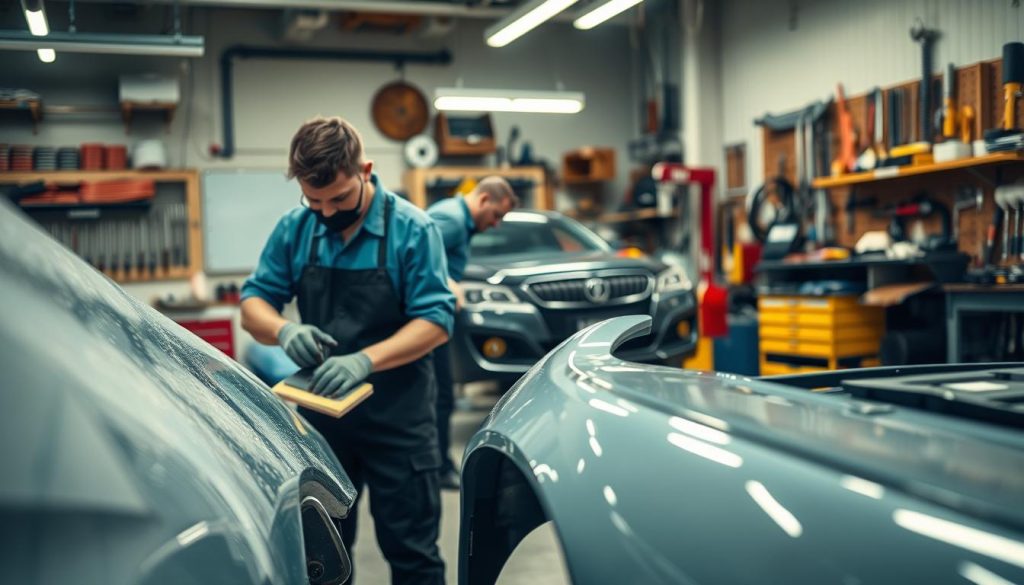
Assessing Damage: The Importance of Accurate Estimates
Assessing damage accurately is the cornerstone of a successful auto body repair process, ensuring that repairs are done correctly and on budget. This critical step not only affects the quality of the repair but also influences customer satisfaction and the overall cost of the repair.
Different Models, Different Assessments
The type of vehicle significantly impacts how damage is assessed. For instance, luxury cars with advanced safety features and complex body structures require a more detailed assessment compared to standard models. Similarly, electric vehicles present unique challenges due to their battery placement and electric powertrains, necessitating specialized knowledge in damage assessment.
The variation in vehicle models means that repair shops must be versatile and knowledgeable about different makes and models, adapting their assessment techniques accordingly.
Leveraging Digital Tools for Precision
The use of digital tools has revolutionized the process of damage assessment in auto body repair. Advanced software and diagnostic equipment enable repair shops to provide more accurate estimates by analyzing the extent of the damage in detail.
These digital tools not only enhance the precision of the assessment but also streamline the process, reducing the time taken to provide customers with repair quotes.
Towards Transparent Repair Quotes
Securing a transparent repair quote is essential for building trust between the repair shop and the customer. A detailed and accurate estimate helps in setting clear expectations regarding the cost and scope of the repairs.
By utilizing digital tools and adapting assessment techniques to different vehicle models, repair shops can ensure that their quotes are both transparent and reliable, facilitating a smoother repair process.
Choosing the Right Repair Shop
Finding a reliable auto body repair shop is vital for a stress-free collision repair experience. When your vehicle is damaged, you want to ensure that it’s repaired correctly and efficiently.
Factors to Consider When Selecting a Repair Shop
Several factors come into play when choosing an auto body repair shop. Certifications and experience are crucial, as they indicate a shop’s ability to handle complex repairs. Additionally, consider the shop’s reputation, equipment, and the quality of their work.
It’s also essential to assess the shop’s communication style and customer service. A reputable shop will provide clear explanations of the repair process and keep you informed throughout.
The Importance of Certifications
Certifications are a key indicator of a repair shop’s expertise. Look for shops certified by manufacturers or industry organizations, as this demonstrates their commitment to staying up-to-date with the latest techniques and technologies.
Certified technicians have undergone rigorous training, ensuring that your vehicle is in capable hands. This is particularly important for modern vehicles with advanced safety features and complex systems.
Customer Reviews and Recommendations
Customer reviews and recommendations can provide valuable insights into a repair shop’s quality of service. Check online reviews and ask for referrals from friends, family, or your insurance provider.
A shop with a strong reputation and positive reviews is more likely to deliver high-quality repairs and excellent customer service. Be wary of shops with consistently negative feedback or a lack of transparency.
By considering these factors and doing your research, you can find a reliable auto body repair shop that meets your needs and gets your vehicle back on the road quickly.
The Repair Process Explained for Different Models
Auto body repair is not a one-size-fits-all process; different car models require unique approaches. The complexity and specifics of the repair depend on various factors, including the vehicle’s make, model, and the extent of the damage.
The Step-by-Step Guide to Collision Repair
The collision repair process typically begins with an assessment of the damage. This involves creating a detailed estimate that outlines the necessary repairs, parts, and labor. Accurate estimation is crucial to ensure that all necessary work is identified and that the vehicle is restored to its pre-accident condition.
The next step is disassembly, where damaged parts are removed to facilitate repairs. This is followed by the actual repair work, which can include straightening or replacing body panels, repairing or replacing mechanical components, and refinishing the vehicle’s surface.
- Assessment and estimation
- Disassembly of damaged parts
- Repair or replacement of damaged components
- Refinishing and quality control
Differences in Repair Techniques for Various Models
Different car models require different repair techniques due to variations in design, materials, and technology. For instance, luxury cars often feature advanced materials and complex systems that demand specialized repair techniques and equipment.
Electric vehicles (EVs) present another set of challenges, as their repair requires knowledge of electric powertrains and battery systems. Technicians must be trained to handle the unique aspects of EVs, including high-voltage systems and specialized battery repair procedures.
Quality Control Measures in Vehicle Repair
Ensuring the quality of repairs is paramount. This involves a series of checks and inspections to verify that the work meets industry standards and the vehicle is safe to operate. Quality control measures include verifying the accuracy of repairs, checking for any signs of damage or needed additional repairs, and ensuring that all systems are functioning properly.
By understanding the repair process for different car models and adhering to rigorous quality control measures, auto body repair shops can provide high-quality service that meets the needs of diverse customers.
Why Choose Miracle Body and Paint for Your Repairs
When it comes to auto body repair and collision repair, choosing the right service provider is crucial. At Miracle Body and Paint, we pride ourselves on our ability to handle repairs for a wide range of car models, ensuring that every vehicle is restored to its original condition.
Expertise Across Various Models
Our team is skilled in dealing with the unique needs of different car models, from sedans and SUVs to luxury cars and electric vehicles. Whether you’re dealing with minor scratches or major collision damage, we have the expertise to get the job done right.
Conveniently Located in San Antonio
With two convenient locations in San Antonio, you can easily find a Miracle Body and Paint facility near you. Our collision repair services are designed to be efficient and hassle-free, getting you back on the road as quickly as possible. Contact us today to schedule your auto body repair.

